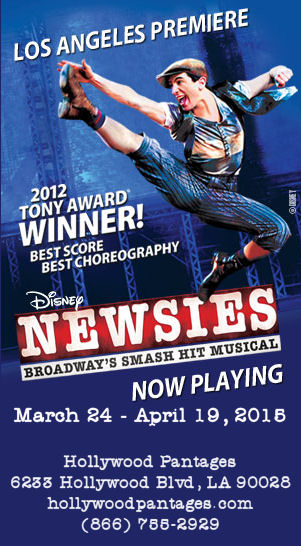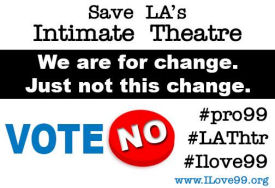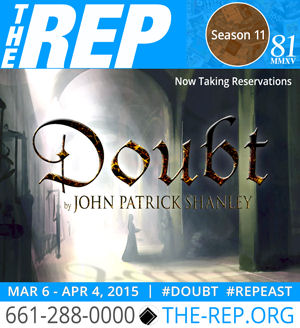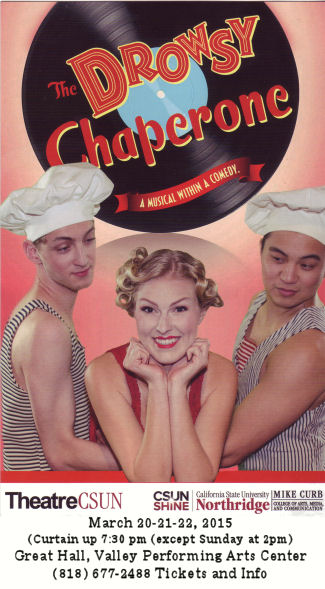 It’s March. March was a month where we skip the pointless introductions, because it can’t decide if it is officially spring or summer. Here are the headlines:
It’s March. March was a month where we skip the pointless introductions, because it can’t decide if it is officially spring or summer. Here are the headlines:
- How Montague Expressway got its name. Dan-the-County-Roads-Man does and says “thanks for the history question! I love those.” Expressways were most often named for the older roads they were built over…
- Caltrans and San Mateo address dangerous merge: State Route 92 and El Camino Real interchange project moves ahead . Plans to alleviate the dangers of one of the Bay Area’s most hazardous highway intersections are well underway as the city of San Mateo and Caltrans work to remodel the State Route 92 and El Camino Real interchange. The current full cloverleaf layout was designed more than 50 years ago and provides short weaving distances where drivers must compete to exit and enter the freeway. The configuration also forces drivers to merge onto El Camino Real with wait times frequently causing cars to back up the length of the ramp and spill over onto State Route 92.
- 118, Somis Road construction gets start date . For those who commute along a dangerous and outdated portion of Highway 118 that cuts through Somis, there’s light at the end of the tunnel. Although the drive will get worse before it gets better, the intersection of the 118 and Somis Road is scheduled for an overhaul in May to improve the traffic flow and create a fourway stop. Construction at the intersection is expected to take eight months, at a cost of about $2.5 million.
- $1.1 Billion and Five Years Later, the 405 Congestion Relief Project Is a Fail. This past May the project known as the I-405 Sepulveda Pass Improvement Project came to official completion, with resulting new on-ramps and off-ramps, bridges and a northbound 405 carpool lane stretching 10 miles between the 10 and 101 Freeways. The four-turned–five-year, $1.1 billion project became a long-running nightmare of sudden ramp closures, poorly advertised by Metro and made all the worse by baffling detours that led drivers into the unfamiliar Bel Air Hills and Sherman Oaks hills, dead ends and unlit canyons.
- Report: Closing the 710 Freeway gap would take years and cost billions. Any major modifications to the unfinished 710 Freeway, one of Los Angeles County’s most persistent transportation controversies, would cost billions of dollars and take years to complete, according to environmental documents released Friday. In a 2,260-page draft environmental report, the California Department of Transportation and the Los Angeles County Metropolitan Transportation Authority examined four construction options they say could address the congestion and health issues that stem from the 710’s abrupt ending on a surface street in Alhambra. The freeway is a favored route for truckers shuttling between the ports of Los Angeles and Long Beach and distribution centers in central Los Angeles County.
- $200-million Orange County tollway project stalls . A $200-million tollway project in Orange County suffered another defeat this week as water quality regulators refused to issue a waste discharge permit that was needed before construction can begin on the controversial project. In a unanimous vote, the San Diego Regional Water Quality Control Board on Monday declined to issue the permit to the Transportation Corridor Agencies, the operator of 51 miles of toll roads in Orange County.
- VTA: Plans in works to extend express lanes on 237. The Valley Transportation Authority is finalizing its plan to add express lanes on State Route 237 from North First Street in San Jose to Mathilda Avenue in Sunnyvale. VTA held a public meeting March 3 to inform residents about phase 2 of the plan, which is set to be completed in late 2016.
- State Route 282 Relinquishment Under Consideration by Caltrans. TAF was informed on March 19, 2015, that “Caltrans is preparing a feasibility report to assess the potential to relinquish State Route 282 (SR-282) to the city of Coronado.” SR-282 is the portion of Third and Fourth Streets that runs from Orange Avenue to Naval Air Station North Island (NASNI). This includes the portion of Alameda Avenue between Third and Fourth Streets. This is the Avenue of Heroes neighborhood loop. The process of “relinquishment is the removal of a State highway, either in whole or in part from the State Highway System (SHS),” and a contractual turning it over to another jurisdiction. In the case of SR-282 this would be the city of Coronado. (1)
- Historic Point Reyes bridge to be replaced, Caltrans says. The 86-year-old bridge that leading to Point Reyes Station will be demolished and replaced in what will be at least a seven-year process involving public input, lengthy environmental review and years of construction that will necessitate a temporary one-lane bridge across Lagunitas Creek. Public scoping for a replacement kicked off last Thursday at a poster-filled open house, hosted by the local district of the California Department of Transportation at West Marin School. Comments will be accepted through April 20.
- 2 options considered for reconstructing part of congested 710 Freeway. During most workdays, trucks hauling cargo containers dominate the two right lanes in each direction of the 710 Freeway, a vital trade corridor for the ports of Los Angeles and Long Beach, the largest combined harbor in the United States. The worst congestion occurs at rush hour when big rigs line up nose to tail, forming a wall of vehicles that extends for miles in each direction. Traffic in all lanes slows to a crawl, and motorists back up at the short offramps built in the 1950s.
- The torture that is the I-680 evening commute. I’ve noticed that small wooden stakes with spray-paint markings have been pounded into the dirt on the right shoulder of northbound Interstate 680 in the Fremont area. Could that have anything to do with widening 680 and adding more lanes? It would be an answer to my prayers! The afternoon commute out of Silicon Valley is horrible, which is why I have such a vested interest in seeing those little stakes in the ground.
- Major I-215/Newport Road project about to begin. Menifee residents are approaching the impending construction of the I-215/Newport Road intersection with equal measures of anticipation and dread. Anticipation for a remedy to the gridlock and frustration drivers experience getting on and off the freeway there. Dread because it will require more gridlock and frustration over the next 18 to 24 months.
- New Lost Hills bridge a ‘safe’ alternative. When it’s completed in about two years, the new Lost Hills bridge will have five traffic lanes, two bike paths and a sidewalk, making the passage across the 101 Freeway safer for pedestrians, cyclists and drivers. The Lost Hills interchange is a main access point for drivers traveling to western Calabasas and Malibu. The bridge carries almost 30,000 vehicles each day and is considered too small for the high demand.
- Freeway ramp facelift delayed . Beautification plans for the First Street interchange have been pushed back at the request of the Simi Valley City Council. The proposed $822,500 interchange facelift includes planting low-maintenance, drought tolerant plants and trees on the site, said Ron Fuchiwaki, Simi Valley’s director of public works. The proposal also includes an additional $252,000 worth of maintenance and upkeep for the next seven years.
- Somis Road intersection to be redesigned. Ventura County Public Works Agency’s Department of Transportation will move forward as early as May to construct a realignment of the Donlon Road and Highway 118 intersection to line up with Somis Road (Highway 34). The purpose of the project is to improve safety at the intersection by eliminating the offset between Donlon and Somis roads. Construction will take about eight months. Shoulder widening along Highway 118 will occur at night to minimize disruption to traffic.
- The Panhandle Freeway and the Revolt That Saved the Park. Early this year, fresh talk of building a second BART tube to connect northwest San Francisco with the rest of the system garnered attention. But you can find other grand transit visions going back a century or more, many of which could have drastically changed the landscape of the city. From the 1910s through the 1960s, the thinking mostly involved building highways and freeways for cars, such as the “Divisional Highway” plan of the 1920s that would have gone through the Castro and up Divisadero to the Golden Gate.
- MTA’s toll-lane project may be a victim of its own success. The conversion of the 110 Freeway’s carpool lanes into toll lanes was not without bumps: Some Angelenos feared that adding tolls to the Los Angeles County freeway network would further divide rich and poor commuters. Others groused that freeways should be free. But two years later, the Metropolitan Transportation Authority project is on the cusp of becoming a victim of its own success: So many drivers now steer into the Harbor Freeway’s northbound toll lanes to escape morning traffic jams that the paid route is slowing down too. Over the course of a year, even as the per-mile toll crept toward the maximum, traffic in the paid lanes increased by almost 20% and speeds began to slow, officials say.
 Theatre and highways: a lovely pair. From the Road Theatre Company in North Hollywood to the Route 66 Theatre in Chicago; from classic stories about the road such as “The Grapes of Wrath” (which takes place along Route 66 and off Route 99) to more modern parodies such as “CHiP: The Musical” (which played the Falcon — itself near Route 134 — a few years ago). Here in Los Angeles there are loads of small theatres directly on or near streets that used to be state highways: From REP East, on former Route 126; the large cluster of theatres along Lankersheim Blvd (the former state route that became Route 170); the Odyssey Theatre complex along former Route 7 (what become I-405) in West LA; to the theatre district along Santa Monica Blvd (former Route 2 and US 66) in Hollywood. These are all 99 seat and under theatres, and they are theatres whose existence is threatened by a proposal from AEA. This proposal would require these theatres to pay their actors minimum wage for rehearsals and performances, raising their costs overnight at least 10 fold — or more, depending on the number of AEA actors. On the surface, the union is doing this to protect “the dignity of actors” (even though the actors in Los Angeles do not want it, and being paid minimum wage when other venues pay much more is an odd definition of “dignity”); underneath, the real reason may be buried in the small print: if the theatre treats the actor as employee and there is an AEA contract, the AEA gets paid its fees first (whereas it gets little now). The larger community — from actors to producers to stage managers to creatives to audiences are saying, collectively, “Change is needed, but not this change.” We want to rework how intimate theatre is done, but not with this heavy handed solution forced from non-Californians. Learn more about the controversy at the I Love 99 website, and follow their Facebook group and Twitter feed. If you are an AEA member, vote “No” (and tell your friends). If you are not, spread the word.
Theatre and highways: a lovely pair. From the Road Theatre Company in North Hollywood to the Route 66 Theatre in Chicago; from classic stories about the road such as “The Grapes of Wrath” (which takes place along Route 66 and off Route 99) to more modern parodies such as “CHiP: The Musical” (which played the Falcon — itself near Route 134 — a few years ago). Here in Los Angeles there are loads of small theatres directly on or near streets that used to be state highways: From REP East, on former Route 126; the large cluster of theatres along Lankersheim Blvd (the former state route that became Route 170); the Odyssey Theatre complex along former Route 7 (what become I-405) in West LA; to the theatre district along Santa Monica Blvd (former Route 2 and US 66) in Hollywood. These are all 99 seat and under theatres, and they are theatres whose existence is threatened by a proposal from AEA. This proposal would require these theatres to pay their actors minimum wage for rehearsals and performances, raising their costs overnight at least 10 fold — or more, depending on the number of AEA actors. On the surface, the union is doing this to protect “the dignity of actors” (even though the actors in Los Angeles do not want it, and being paid minimum wage when other venues pay much more is an odd definition of “dignity”); underneath, the real reason may be buried in the small print: if the theatre treats the actor as employee and there is an AEA contract, the AEA gets paid its fees first (whereas it gets little now). The larger community — from actors to producers to stage managers to creatives to audiences are saying, collectively, “Change is needed, but not this change.” We want to rework how intimate theatre is done, but not with this heavy handed solution forced from non-Californians. Learn more about the controversy at the I Love 99 website, and follow their Facebook group and Twitter feed. If you are an AEA member, vote “No” (and tell your friends). If you are not, spread the word.



 Yesterday, Playbill published an interesting article on
Yesterday, Playbill published an interesting article on 
 It’s Saturday, and that means it is time to clean out the accumulated saved URL links (with a bit of commentary) from the week. Get your fill now — next week’s stew will be chametz-free!
It’s Saturday, and that means it is time to clean out the accumulated saved URL links (with a bit of commentary) from the week. Get your fill now — next week’s stew will be chametz-free!
 What is reality?
What is reality?
 Near the end of The Drowsy Chaperone, the Man in Chair (who has been the guide throughout the show) notes that, while The Drowsy Chaperone isn’t a perfect show, it does what a musical is supposed to do: it takes you to another world, it gives you a little tune to carry in your head for when you’re feeling blue. Last night, during the
Near the end of The Drowsy Chaperone, the Man in Chair (who has been the guide throughout the show) notes that, while The Drowsy Chaperone isn’t a perfect show, it does what a musical is supposed to do: it takes you to another world, it gives you a little tune to carry in your head for when you’re feeling blue. Last night, during the 

 One of the most important adages on the Internet is: “If you are using a website for free, you are not the customer… you are the product being sold.” The emphasis here is on understanding who the customer really is. If you are going to sell a product — and create a business selling a product — you must know who your customers are (and ensure you will get more). I’m bringing this up because (a) it is lunchtime (when I can write about ideas), (b) two articles came across my RSS feeds that put the brain in motion, and (c) I’ve got the whole 99 seat discussions that have been going on in my mind. As you know, I’ve been very involved in those discussions, and have been trying to bring the audience viewpoint to them.
One of the most important adages on the Internet is: “If you are using a website for free, you are not the customer… you are the product being sold.” The emphasis here is on understanding who the customer really is. If you are going to sell a product — and create a business selling a product — you must know who your customers are (and ensure you will get more). I’m bringing this up because (a) it is lunchtime (when I can write about ideas), (b) two articles came across my RSS feeds that put the brain in motion, and (c) I’ve got the whole 99 seat discussions that have been going on in my mind. As you know, I’ve been very involved in those discussions, and have been trying to bring the audience viewpoint to them.